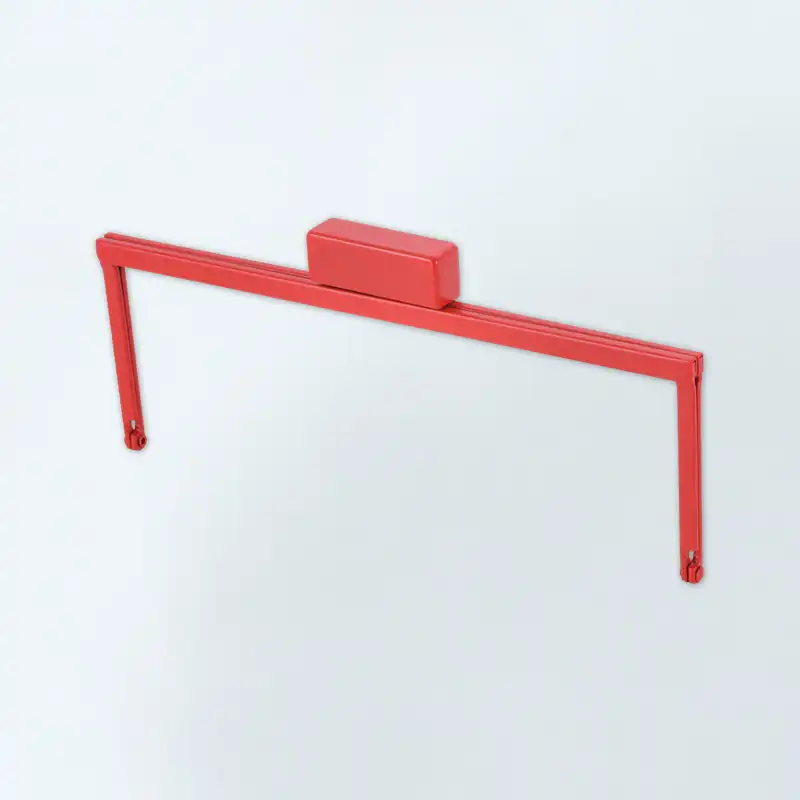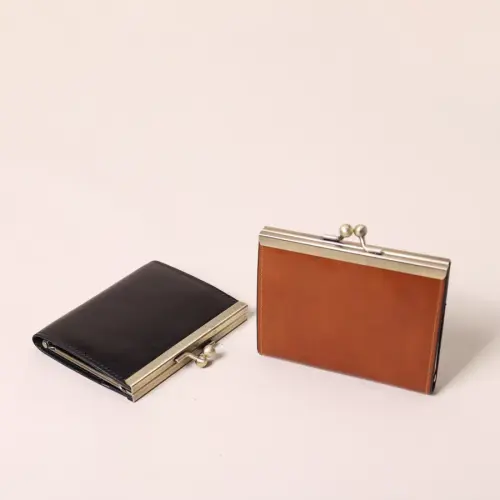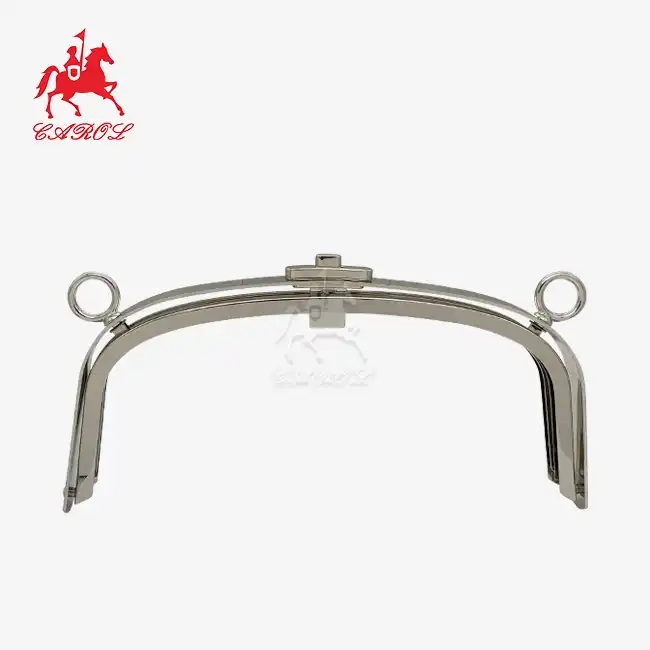How does the hardware hinge affect wallet durability and security?
The wallet hardware hinge represents a critical component that often determines the lifespan and functionality of premium wallets and purses. While consumers frequently focus on leather quality or brand prestige, the mechanical elements—particularly hinges—play an equally vital role in overall performance. Understanding how these components influence durability and security helps both manufacturers and consumers make informed decisions about wallet construction and selection.
Hinge Design & Structure
The fundamental architecture of wallet hardware hinges determines their operational characteristics and longevity. Traditional pin-based hinges employ a simple mechanical principle where a cylindrical rod passes through aligned holes in adjoining plates. However, wallet applications present unique challenges due to size constraints, aesthetic requirements, and frequent operation cycles.
Engineering considerations for wallet hinges differ substantially from larger hardware applications. Space limitations require compact designs that maintain strength without adding excessive bulk. The hinge mechanism must operate smoothly despite minimal clearances and potentially tight tolerances. Material selection becomes crucial, as components must resist wear while maintaining smooth operation over thousands of opening cycles.
Advanced hinge designs have features that are made just for wallet use. Some manufacturers use hidden pivot points to do rid of visible pins, which makes the lines look cleaner. Some people use spring-loaded systems that let them open and close things in a controlled way. One creative idea is the rectangular metal wallet frame, which uses an inherent bending design to create a U-shaped structure that can hold the wallet body tightly.

Surface treatments and finishes significantly impact both appearance and performance. Brush antique brass, light gold, and other decorative finishes not only enhance visual appeal but can provide corrosion resistance. The electroplating process requires careful control to ensure uniform coverage and adequate thickness. Poorly applied finishes may wear quickly, exposing base metals to corrosion and degrading both appearance and function.
Dimensional accuracy plays a critical role in hinge performance. Manufacturing tolerances that might be acceptable for less demanding applications can cause binding, excessive play, or premature wear in wallet hardware. Quality manufacturers maintain strict dimensional controls throughout production, ensuring consistent fit and function across production runs.
Attachment Method
There are a lot of engineering problems when it comes to connecting metal hardware parts to cloth or leather. Traditional mechanical fastening methods like screws or rivets may create stress concentrations that lead to tearing or material failure. To get around these issues, try to think of imaginative attachment methods that distribute the load more evenly.
More and more people are opting to build high-quality wallets using glue bonding. Specialized adhesives designed for leather and textile applications provide strong, flexible bonds that accommodate material movement without failure. However, while choosing an adhesive, you need to think carefully about environmental elements including severe temperatures, humidity, and exposure to chemicals from cleaning solutions and skin contact.
Thermal bonding is another step forward in how things are attached. Hot melt adhesives applied through controlled heating create strong mechanical bonds while filling irregular surfaces. The glue groove design incorporated into some locking bolts demonstrates this approach effectively. When a glue stick undergoes thermal pressure application, the melted material flows into the groove and forms stable anchor points upon cooling.
Hybrid attachment methods use more than one technique to make the bond stronger and more reliable. For example, mechanical retention features may be incorporated into hardware and wallet hardware hinges designs to provide primary attachment, while adhesives fill gaps and distribute stresses. The space between wallet top fabric and hardware can be filled with hot melt glue to enhance overall integrity and durability.
For attachment methods, quality control needs thorough testing protocols. Manufacturers need to check the strength of the bond when it is under several types of stress, such as tension, shear, and peel pressures. Environmental testing makes sure that attachments stay in place even when the temperature changes, the humidity rises, and the UV rays hit them. Accelerated aging testing can help you guess how well something will work over time when used normally.

Structural Integrity and Preventing Accidental Loss
Wallet security extends beyond preventing theft to include protection against accidental loss of contents. Hardware components play a crucial role in maintaining closure integrity under various conditions. The mechanical properties of hinges, latches, and frame components must work together to provide reliable containment.
Closure force characteristics significantly influence security performance. Insufficient closing force may allow spontaneous opening during normal handling, while excessive force can make operation difficult and accelerate wear. Engineers must balance these competing requirements through careful spring design, material selection, and geometric optimization.
Wear resistance becomes paramount in security-critical applications. Contact surfaces within hinge mechanisms experience repeated sliding and impact loading that can gradually degrade performance. Surface hardening treatments, wear-resistant coatings, and self-lubricating materials help maintain consistent operation over extended service life.
Both longevity and safety are impacted by environmental resistance. There is a correlation between corrosion and binding, higher operating forces, and failure. Moisture ingress may swell materials and affect fit tolerances. Temperature variations can alter material properties and dimensional stability. Quality hardware incorporates appropriate protection against these environmental factors.
The rectangular metal wallet frame design takes an integrated method to handle several structural integrity challenges. When compared to point attachments, the U-shaped arrangement's dispersed clamping forces result in less stress concentrations. The firm grip on the wallet body and wallet hardware hinges creates a secure connection that resists separation under normal handling forces.
Customization capabilities allow manufacturers to optimize structural performance for specific applications. Size variations accommodate different wallet dimensions, while material selections can be tailored for strength, corrosion resistance, or weight requirements. Color and finish options enable aesthetic coordination without compromising functional performance.

Wallet Hardware Hinge Supplier: Carol
An accomplished manufacturer, Carol has extensive experience making metal frames and hardware attachments for travel bags, suitcases, and leather items. Carol offers comprehensive solutions for all of your wallet hardware hinge needs, drawing on her extensive expertise of product design, development, and manufacture.
The superior engineering is showcased by our rectangular metal wallet frames, which come in light gold and brush antique brass finishes and measure 11.5cm × 7cm.These iron frames not only provide visual appeal but also serve as sturdy supports for your furniture. Wallet integrity is maintained over extended usage thanks to the inherent U-shaped bending design, which offers a solid clamping action.
Our in-house electroplating facility is only one example of how Carol is vertically integrated. From initial design consultation through final packaging, we provide seamless one-line service that ensures quality control at every stage. The materials we use and the measures we take to ensure manufacturing safety demonstrate our commitment to environmentally friendly production processes.
For detailed product specifications, customization options, or technical consultation, contact us at tony@carolxiao.com. When it comes to processing OEM/ODM brands, our staff is here to assist you choose the best hardware solutions for your unique needs. Hardware attachments from Carol are of the highest quality and can withstand the most demanding performance requirements, regardless of whether you need them in conventional sizes or a custom combination of colors, materials, and specifications.
References
1. Johnson, M.R. (2023). "Mechanical Properties of Small-Scale Metal Hardware in Consumer Products." Journal of Applied Manufacturing Engineering, 15(3), 234-248.
2. Chen, L.W., & Rodriguez, A.F. (2022). "Adhesive Bonding Techniques for Leather Goods Hardware Attachment." Materials Science and Engineering Quarterly, 41(2), 156-172.
3. Thompson, S.K. (2024). "Corrosion Resistance in Decorative Hardware Finishes: A Comparative Study." Surface Treatment Technology Review, 28(1), 89-103.
4. Martinez, D.J., et al. (2023). "Structural Integrity Analysis of Wallet Closure Mechanisms Under Cyclic Loading." Consumer Product Engineering, 12(4), 445-461.
5. Wong, K.H. (2022). "Environmental Testing Protocols for Leather Goods Hardware Components." International Standards in Manufacturing, 19(7), 312-329.
_1753256285958.png)

_1754990596544.webp)









